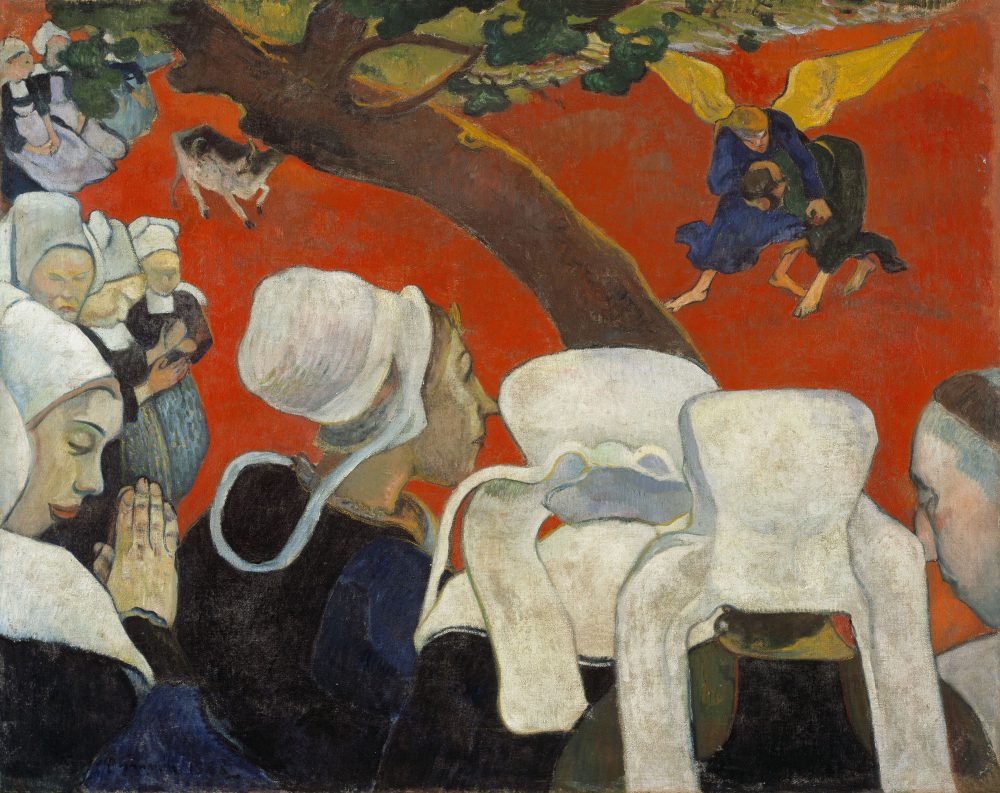Synthetism
Artistic Movements, Periods and Styles in 5 Points
We could make this publication thanks to small donations. How is 3 minutos de arte supported?
Synthetism
- Around 1888, Gauguin and a group of painters with whom he lived and shared ideas and artistic experiences in Pont-Aven, decided to call “Synthetism” to that “new thing” they were doing, which had nothing to do with Impressionism and that would have decisive influences on entire movements of modernity in general and Expressionism in particular.
- As it was a time of many changes, novelties, and creative effervescence, there were many ideas, trends, groups, and denominations. To make it simple, we could say that, in general, they were Post-Impressionist artists, who belonged to what would be called the Pont-Aven School, and who practiced Synthetism. (They also practiced Cloisonnism, applying color to delimited zones with well-marked borders, but the difference is that Cloisonnism is a technique, and Synthetism is their theory about what art should be).
- Synthetism refers to synthesis, not in the sense of simplification but of obtaining one thing by combining several. What Synthetism proposes is to combine: the distancing of the imitation of nature (the external appearance of things is no longer important) with the purity of form, with the purity of color, with the purity of line, and with the feeling of the artist. When these characteristics are combined, artists no longer paint an object as they see it. They paint what they feel, the emotion it produces in them, and use color to emphasize that emotion.
- “A greater expressive force” was ultimately sought, so these ideas were crucial to Expressionism. And they were the starting point for something that had no return: let’s think that, in general, all the art that came later would break one rule after another to achieve a greater expressive force.
- Gauguin aimed to paint “from memory,” meaning not to paint the thing we can see, but the idea that has remained, the essence of the thing that remains after the memory filters it (which eliminates the details, the superfluous). These purified forms are colored according to the emotions and feelings, and then they acquire meaning.
Image: Vision after the Sermon (1888). Paul Gauguin.
Representative artists: Gauguin, Bernard, Anquetin, Sérusier.
Recommended links:
Timeline: from Neoclassicism till the end of the 19th century.
The First Painting of Synthetism?
Fundamental Paintings: When Will You Marry? (1892), Paul Gauguin.
Gauguin: “Art is what you see, the emotion it causes you.”
You can also find more material using the search engine.




0 Comments